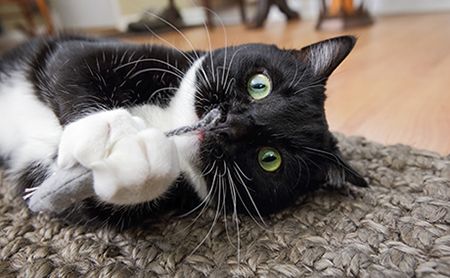Journal Scan: What's the power behind catnip?
Though catnip may not attract all cats, this study examines the chemical geekery that results in a feline purr and point to future pharmaceuticals.

She just can't resist that catnip-infused rodent replica. (Adobe Stock/soupstock)
Why they did it
Catnip is well known for its effects on the approximately two-thirds of cats that can smell it. We have come to associate it with the intoxicated-like behavior of rolling, rubbing, purring and general feline happiness it produces. However, the synthesis of the active compound, nepatalactone, has not been completely understood. Nepatalactone belongs to a class of compounds called terpenes and it's thought that some plant-derived chemotherapeutics are synthesized in a similar fashion.
What they did
The specific chemistry behind the isolation of the intermediate steps for synthesizing nepatalactone is somewhat beyond the interest level of the average veterinarian. However, a detailed description is available in the full text article if you would like to geek out on some chemistry. Structure of the products were analyzed by x-ray crystallography.
What they found
Nepatalactone is created using a unique two-step process involving a series of NEPS enzymes that appear to be unique to nepatalactone synthesis.
Take-home points
As esoteric as these findings sound, they have significant potential beyond the understanding of nepatalactone synthesis. Understanding this unique pathway opens the door for use of a similar process to create synthetic molecules as well as a better understanding of how other plant-derived terpenes are created. Such processes may lead to the discovery of new pharmaceuticals.
Lichman BR, Kamileen MO, Titchiner GR, et al. Uncoupled activation and cyclization in catmint reductive terpenoid biosynthesis. Nat Chem Biol 2019;15(1):71.
